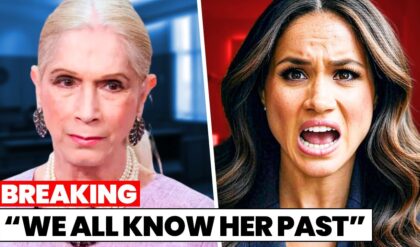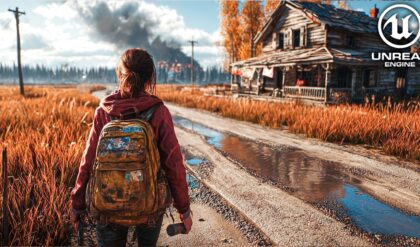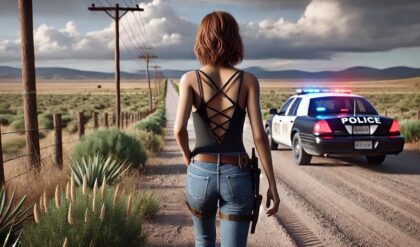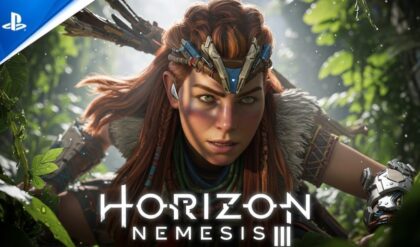Eyes of Wakanda: Mosy and the Dawn of the Black Panther Legacy
Introduction
The Marvel Cinematic Universe (MCU) is set to expand its rich tapestry with Eyes of Wakanda, an animated Disney+ series premiering on August 6, 2025, that dives deep into the ancient origins of Wakanda’s most iconic hero, the Black Panther. At the heart of this four-part anthology is Mosy, the first Black Panther, a prehistoric warrior who survived the heart-shaped herb and earned the favor of the panther goddess Bast over a million years ago. Created by Jason Aaron and EAD Ribic in the Marvel Legacy comics, Mosy’s story, set against the backdrop of cosmic rifts and vibranium’s mystical power, promises to redefine the Black Panther legacy. This series, executive produced by Ryan Coogler and directed by Todd Harris, follows the Hatut Zeraze, Wakanda’s elite warriors, as they retrieve dangerous vibranium artifacts across history. This article explores Mosy’s groundbreaking tale, the series’ vibrant cast, and its monumental significance for the MCU’s Wakandan mythos.
The Black Panther Legacy and Wakanda’s Origins
Since his debut in Fantastic Four #52 in 1966, created by Stan Lee and Jack Kirby, the Black Panther has been a cultural touchstone, embodying Afrofuturism and African pride. T’Challa, portrayed by Chadwick Boseman in the MCU, brought Wakanda to global prominence in Black Panther (2018), a film that grossed $1.3 billion and earned a Best Picture Oscar nomination. Wakanda, a technologically advanced nation in East Africa, thrives due to its vibranium deposits, a resource that shapes its history and defenses. The Black Panther, empowered by the heart-shaped herb, is both king and protector, a mantle passed through generations from T’Challa to Shuri in Black Panther: Wakanda Forever (2022).
Eyes of Wakanda rewinds the clock to a million years ago, when a vibranium-rich meteor, the Minagi, crashed into Wakanda, unleashing cosmic energies that opened rifts in the space-time continuum. These rifts drew powerful beings, including Odin, the Norse god, setting the stage for Mosy’s emergence. Unlike T’Challa or Shuri, Mosy’s era predates Wakanda’s monarchy, offering a primal, mythological perspective on the Black Panther’s role as a warrior blessed by Bast.
Mosy: The First Black Panther
Mosy, introduced in Marvel Legacy (2017), is a groundbreaking addition to the Black Panther lore. As the first Wakandan to survive the heart-shaped herb—a mystical plant tied to vibranium and Bast’s divine power—Mosy embodies raw strength and spiritual connection. His story unfolds in a prehistoric Wakanda, where the Minagi meteor’s cosmic energies create chaos, attracting gods and monsters. Odin, impressed by Mosy’s prowess, grants him the ability to wield Mjolnir, Thor’s hammer, a rare honor that elevates Mosy to a near-mythic status. This fusion of Wakandan tradition with Norse mythology underscores the series’ ambition to blend African heritage with cosmic storytelling.
In Eyes of Wakanda, Mosy’s exploits anchor the narrative, showcasing his battles against otherworldly threats and his role in protecting vibranium. As the first Black Panther, he establishes the mantle’s legacy, which the Hatut Zeraze—Wakanda’s covert operatives, akin to a “Wakandan CIA”—uphold through centuries. The series’ anthology format will juxtapose Mosy’s ancient tale with later warriors’ missions, illustrating how his courage shapes Wakanda’s secretive global operations. Fans speculate, based on posts on X, that Mosy’s story may involve time-travel elements, with the Hatut Zeraze confronting threats like the Horde, a destructive force from the comics, to safeguard the Sacred Timeline.
The Hatut Zeraze and Vibranium’s Global Reach
The Hatut Zeraze, or “Dogs of War,” are central to Eyes of Wakanda, tasked with retrieving vibranium artifacts from Wakanda’s enemies across history. Vibranium, known as “Isipho” in Xhosa, is the strongest metal in the MCU, used in Captain America’s shield and Ironheart’s armor. The series explores their globe-trotting missions, from ancient Egypt to feudal Japan, highlighting Wakanda’s hidden influence on world history. Showrunner Todd Harris describes the Hatut Zeraze as warriors whose loyalty is tested, emphasizing their role in maintaining Wakanda’s isolationist ethos—“a line they won’t cross and won’t let others cross.”
The series also visits K’un-Lun, home of the Iron Fist, suggesting cross-cultural encounters that enrich the MCU’s mystical landscape. These missions, spanning centuries, underscore vibranium’s allure and danger, with the Hatut Zeraze facing moral dilemmas and external threats. The anthology format, compared to Star Wars: Tales of the Jedi by critics, allows Eyes of Wakanda to weave a tapestry of interconnected stories, with Mosy’s era as the foundation.
Cast and Creative Team
Eyes of Wakanda boasts a stellar voice cast, bringing depth to its historical and futuristic characters:
Winnie Harlow, Cress Williams, Lynn Whitfield, and Anika Noni Rose voice key Hatut Zeraze members, with Williams potentially as a leader like Azari, a comic-inspired warrior.
Patricia Belcher, Larry Herron, Adam Gold, Jacques Colimon, Jona Xiao, Isaac Robinson-Smith, Gary Anthony Williams, Zeke Alton, and Steve Toussaint round out the ensemble, possibly portraying figures like Noni, a “disruptor” teased by Marvel. The absence of confirmed casting for Mosy has fueled speculation, with some fans on Reddit suggesting Denzel Washington, who hinted at a role in Black Panther 3, could voice the prehistoric hero, though this remains unconfirmed.
Todd Harris, a storyboard artist for Black Panther and Wakanda Forever, serves as showrunner and director, bringing a deep understanding of Wakanda’s aesthetic. Ryan Coogler, alongside Proximity Media’s Zinzi Coogler, Sev Ohanian, and Kalia King, executive produces, ensuring continuity with the films’ Afrofuturist vision. Marvel Studios’ Kevin Feige, Louis D’Esposito, and Brad Winderbaum oversee the project, with writer Marc Bernardin (Marvel 1943: Rise of Hydra) contributing two episodes. The use of animation, Harris notes, allows for limitless settings—“Egypt costs as much as New York City”—enabling a visually ambitious series unbound by live-action constraints.
Why Animation and the Sacred Timeline?
Unlike Marvel Animation’s What If…? or X-Men ’97, which explore alternate universes, Eyes of Wakanda is set in the MCU’s Sacred Timeline, sharing continuity with Black Panther and Wakanda Forever. This grounding ensures Mosy’s story and the Hatut Zeraze’s missions impact the MCU’s main narrative, potentially setting up Black Panther 3 or Avengers: Secret Wars. Animation was chosen for its flexibility, allowing the series to depict prehistoric Wakanda, medieval Asia, or futuristic cities without the logistical challenges of live-action filming. Harris emphasizes that “animation is the ultimate equalizer of locations,” enabling a “reimagined, idealized” history unaffected by colonialism.
This choice aligns with Wakanda’s lore as a nation untouched by external expansion, a theme Coogler amplified in the films by drawing inspiration from Lesotho. The series’ Afrofuturist aesthetic, with vibrant visuals and Xhosa-influenced dialogue, will mirror the films’ cultural authenticity, while its cosmic elements—like Odin’s cameo—expand the MCU’s mythological scope.
Significance for the MCU and Black Panther Lore
Eyes of Wakanda is a landmark for the Black Panther franchise, which has grossed over $2 billion across two films and reshaped superhero cinema. By focusing on Mosy, the series honors the legacy of Chadwick Boseman’s T’Challa while exploring new dimensions of Wakanda’s history. Mosy’s prehistoric setting introduces the first Black Panther, predating Bashenga (the first king, seen in Black Panther’s animated sequence), and reframes the mantle as a divine, warrior-driven role rather than a royal one. This shift broadens the franchise’s appeal, appealing to fans eager for deeper lore and new audiences drawn to its epic scope.
The series also addresses the MCU’s post-Boseman era. After Wakanda Forever passed the Black Panther mantle to Shuri (Letitia Wright) and introduced T’Challa II, Eyes of Wakanda avoids recasting T’Challa by focusing on historical figures like Mosy, sidestepping fan debates about Boseman’s irreplaceable portrayal. Rumors of a new T’Challa for Avengers: Secret Wars, reported by Jeff Sneider, suggest Marvel may revisit the role, but Eyes of Wakanda keeps the focus on legacy and diversity, with characters like Noni potentially echoing comic figures like Queen Divine Justice.
Culturally, the series continues Black Panther’s impact as a “movement,” as described by Natasha Alford of The Grio, celebrating Black excellence and Afrofuturism. Mosy’s story, set a million years ago, imagines a Black hero wielding cosmic power, challenging stereotypes and offering a science-fiction vision of African potential, akin to the films’ depiction of Wakanda as uncolonized. The Hatut Zeraze’s global missions further position Wakanda as a hidden force shaping history, reinforcing its status as Marvel’s most powerful fictional nation.
Fan Reactions and Speculation
Fans on Reddit and X are thrilled about Mosy’s debut, with posts praising the series’ potential to “fill in Wakanda’s gaps” and rival The Witcher’s lore-rich storytelling. Some speculate, based on DanielRPK’s leaks, that the Hatut Zeraze may time-travel to stop the Horde, tying Mosy’s era to modern threats. Others hope for cameos from T’Chaka or Azzuri, previous Black Panthers, or connections to Ironheart, given Riri Williams’ vibranium-based armor. The K’un-Lun setting has sparked excitement for Iron Fist crossovers, with fans on r/MarvelStudiosSpoilers suggesting Danny Rand could appear.
However, some express caution about animation’s ability to capture the films’ emotional weight, and a few question whether Mosy’s comic origins—tied to the Avengers 1,000,000 BC—fit the MCU’s grounded tone. The absence of Dora Milaje or Okoye, initially rumored for a separate series, has disappointed some, but the Hatut Zeraze’s prominence and star-studded cast have quelled most concerns.
Challenges and Expectations
Eyes of Wakanda faces high expectations to match Black Panther’s cultural and critical success, which earned a 96% Rotten Tomatoes score and an A+ CinemaScore. The series must balance Mosy’s mythological tale with the Hatut Zeraze’s historical adventures, ensuring each episode feels cohesive despite the anthology format. Animation quality is crucial, with fans expecting visuals on par with What If…?’s best episodes. The voice cast, while impressive, must deliver performances that evoke the films’ gravitas, particularly for Mosy, whose prehistoric setting demands a larger-than-life presence.
Marvel’s decision not to recast T’Challa post-Boseman remains divisive, and Eyes of Wakanda must navigate this by making Mosy a compelling lead without overshadowing T’Challa’s legacy. The series’ Sacred Timeline setting raises stakes, as its events could influence Black Panther 3 or Avengers films, requiring tight integration with the MCU’s Phase Six. Finally, the show must honor Wakanda’s cultural authenticity, avoiding the criticism faced by Wakanda Forever for perceived nationalism, while delivering a universal story.
The Broader MCU Context
Eyes of Wakanda launches amid a packed 2025 for Marvel Animation, following Your Friendly Neighborhood Spider-Man (January 29) and preceding Marvel Zombies (October 3). It kicks off Phase Six, alongside Daredevil: Born Again and Ironheart, both tied to vibranium narratives. The series’ focus on Wakanda’s history complements Black Panther 3 rumors, with Denzel Washington’s reported casting and a potential T’Challa recast signaling a franchise revival. Its K’un-Lun connection may set up Shang-Chi 2, while vibranium’s role could tie to Captain America: Brave New World, where Sam Wilson’s suit uses the metal.
The series also reflects Marvel’s shift toward animation for ambitious storytelling, as seen in X-Men ’97’s success. By exploring Wakanda’s past, Eyes of Wakanda positions the Black Panther legacy as a cornerstone of the MCU’s multiversal saga, potentially introducing comic characters like Bashenga or Kasper Cole for future projects.
Conclusion
Eyes of Wakanda is poised to be a game-changer for the MCU, bringing Mosy, the first Black Panther, to life in a visually stunning, lore-rich series. From his cosmic battles a million years ago to the Hatut Zeraze’s vibranium quests, the show weaves a narrative that honors Wakanda’s past while shaping its future. With a powerhouse cast, Ryan Coogler’s creative vision, and Todd Harris’s bold direction, Eyes of Wakanda promises to captivate fans and newcomers alike. As it premieres on August 6, 2025, this animated epic will cement Mosy’s place in the Black Panther pantheon, proving that Wakanda’s legacy is eternal—and its story far from finished.





